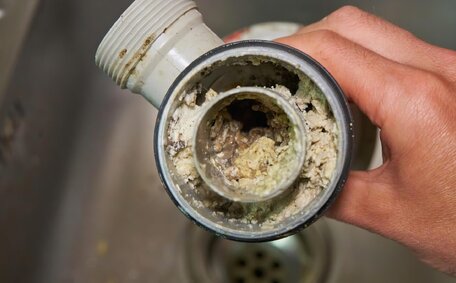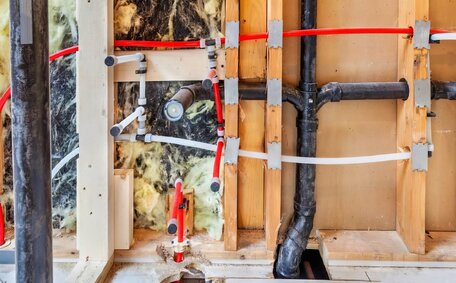Impact of Extreme Weather on Hot Water Systems
Extreme temperatures, fierce winds, and frosty conditions can severely affect your hot water system’s power source. Heatwaves increase demand on water heaters, while icy conditions risk bursting pipes and cracking tanks.
Understanding Sydney’s fluctuating climate is vital to protecting your hot water system and its power supply from winter weather. Annual inspection of anode rods by a professional like Peakhurst Plumbing can prevent damaged water heater components and maintain your tank’s longevity. Knowing how to prepare for extreme cold is crucial to prevent weather-induced damage.
During cold snaps, Insulating tanks, pipes, and valves minimises heat loss and reduces system strain, especially in frozen areas. Adjust your thermostat up in summer and down in winter for enhanced efficiency. Schedule maintenance to check valves, pressure relief lines, and drain pipes to prevent water pipe failures during storms or floods.
Systems like gas electric solar and heat pump may require adjustment to handle extreme weather fluctuations. Our technicians not only install temperature pressure regulating valves but also ensure your system maintains optimal water pressure in all conditions.
Winterizing your hot water system shields it from extreme temperatures, preventing costly future repairs.
Prepare Hot Water Pipes for Freezing Temperatures
Several steps can help protect your plumbing from water pipes freezing during low temperatures:
- Insulate areas like basements crawl spaces and pipes running along exterior walls that are prone to freezing. Fibreglass or foam pipe insulation effectively reduces conductive heat loss.
- Open cabinet doors to help keep pipes under sinks surrounded by warm air, ensuring your family’s safety and doing more than just heating the space. Keeping cold air away from pipes is critical to prevent them from freezing.
- Ensure your water heater maintains a setting around 55°C to help reduce the freezing risk in pipes. Excessively high settings may reduce your heater’s efficiency in winter.
- Installing electric heat tape or hydronic cables around pipes prevents freezing and aids thawing.
- During subzero conditions, let faucets drip to maintain flow and minimise the risk of pipe freezing.
- You can take care to have a plumber inspect your outdoor hose bibs and the water shutoff valve to ensure peak efficiency. Worn washers can cause leaks and burst pipes, raising your utility bills due to water loss.
- Use eco-friendly antifreeze in drip systems and stockpile extra batteries for backup power during outages.
- Insulate water your heater by enclosing the bottom and sides with materials endorsed by the Red Cross. Reducing air flow retains warmth to keep water lines from freezing.
Drain and Flush Sediment from Hot Water Tank
Avoiding sediment buildup in your hot water heater is pivotal for maintaining efficiency and lowering energy costs over time. Annual draining and flushing of sediment maintains efficiency and extends your tank’s lifespan, saving you money.
Here’s how to drain and flush the sediment:
- Turn off power to the water heater from the main power source and close the cold water supply line.
- Connect a garden hose to the tank’s drain valve near the bottom. Route it to a drain or an area where the water can go outside safely.
- Turn water flow to open the pressure relief valve at the top of the tank. This allows air in, facilitating water drainage.
- Open your water heater’s drain valve slowly. Sediment and water will discharge from the hose. Flush until water runs clear.
- Close the drain valve and open a hot water faucet to allow air back into the tank as it refills.
- Close faucets once water flows steadily and take a moment to check your connections for any leaks at valves before restoring power.
Flushing annually adds years to a hot water system’s life. The technicians at Peakhurst Plumbing can help find the best solutions to maintain your system through their expert maintenance if required.
Inspect and Replace Anode Rod
Anode rods are crucial components inside your unit’s water heater tank that prevent corrosion. Made from reactive metals like aluminium and magnesium, the rod attracts corrosive elements to protect the inside tank surfaces. But over time, they erode and must be replaced.
Annual anode rod inspection ensures your storage tank stays protected, especially with Sydney’s variable weather extremes that accelerate corrosion. At Peakhurst Plumbing, our technicians check anode condition during maintenance visits and replace rods showing 60% erosion or more.
- First, drain the tank water as outlined earlier, taking care to avoid scalding.
- For gas models, ensure the pilot light is out before removing the anode rod at the top of the tank using socket wrenches and check its condition. Significant pitting means replacement is needed.
- Apply plumber’s tape to seal threads and install the new anode rod, tightening firmly to avoid leaks.
- Close drain valves, restore power and refill the tank. Confirm no leaks are present.
When inspecting the anode, also examine pipe fittings and valves for signs of wear or corrosion. Our technicians can schedule follow-up visits to replace rods on an annual basis, optimising hot water system protection.
Insulate Hot Water Tank and Pipes
Insulation can prevent your water pipes from freezing and reduce energy bills during the winter. Much like in colder locales such as North Carolina, we understand the importance of insulating both hot and cold pipes near the tank. Slipping closed-cell foam tubing over pipes as pipe sleeves prevents freezing in areas with exposed pipes.
Wrap insulation around your plumbing pipes and the water heater, ensuring a tight fit to block cold air in the winter. Fibreglass or foam with a minimum R-10 rating is effective insulation. Ensure insulation does not cover pressure relief valves, thermostats or access doors.
It’s a good idea to add extra insulation in basements crawl areas and attics, as it also helps retain heat in pipes running through those spaces. Ensure adequate ventilation is still available to prevent moisture buildup.
For easy DIY application, check out our guide on how to use self-sealing foam wraps that simplify insulating water heaters and pipes. The team at Peakhurst Plumbing can also professionally install insulation products to optimally protect hot water systems.
Set Thermostat to Prevent Overheating
The ideal thermostat setting for a hot water heater is approximately 50°C. This precise thermostat setting ensures the heater can provide hot water without overheating, thus conserving energy.
Here’s why it’s important to adjust your thermostat:
- Locate the thermostat dial on your water heater’s exterior. Gas hot water heaters have it near the bottom while electric hot water models have it halfway up.
- Use a flathead screwdriver to carefully turn the dial on gas or electric models to the 120°F mark. This may take some testing to get right.
- For tankless water heater units, consult the user manual as thermostats may be digital controls instead of a dial.
Lower the thermostat by 5-10 degrees during extended absences or cooler weather to save on energy. This reduces operating costs and lowers freezing or overheating risks.
Find out how the experienced technicians at Peakhurst Plumbing are skilled at preparing your hot water system with guidance on optimal thermostat settings for local conditions. We help homeowners tailor hot water systems to stay efficient across Sydney’s variable climate.
Hire a Professional for Maintenance and Repairs
Learn to prepare for extreme weather with professional plumbers at Peakhurst Plumbing to safeguard your hot water systems.
Our licensed technicians offer a variety of services to effectively heat your home, including:
- Emergency plumbing services that include flood stop measures, safeguarding against storm damage and freezing-induced power outages
- Drainage services to remove blockages resulting from heavy rainfall
- Maintenance and optimisation of hot water systems, tailored for seasonal changes
- Gas fitting inspections to ensure your heater functions properly year-round and to detect any carbon monoxide leaks
- Installing pressure relief valves to handle variable water flows
- Pipe insulation and tank wraps to retain heat in winter
With over 25 years of local experience, we understand Sydney’s climate and how to tailor hot water systems accordingly. To schedule an inspection or repair, you can call Peakhurst Plumbing on 1300 349 338 or email jobs@peakhurstplumbingservices.com.au.
Our expert plumbers can evaluate weatherproofing needs and suggest solutions for year-round water system efficiency.






